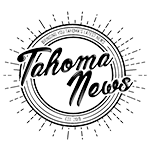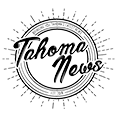Mother’s Day. A father and his children awake to the sweet chirps of birds outside the window, slipping out of bed eagerly. Minutes later, the kitchen is filled with the aroma of tangy blueberry and warm, fragrant vanilla as they whip up a batch of scones while the mother gets the best sleep she’s had in ages. She awakes a while later to the sight of her family’s bright faces and a breakfast tray complete with a bouquet of dazzling flowers – the perfect morning with the people she loves. Mother’s Day is a beautiful day of affection and gratitude, honoring the incredible women who fill our lives with warmth and love – but do we know how the tradition began? Get the scoop right here!
Mother’s Day has roots that date back to ancient times, beginning with the Egyptians. They held an annual festival to pay homage to Isis, a powerful goddess who symbolized motherhood, magic, and nature. Similar springtime rituals were practiced by the Greeks. They paid tribute to Rhea, mother of Zeus and all the gods, with dawn offerings of honey-cakes, drinks, and flowers. Similarly, the Romans celebrated the festival of Hilaria around the Spring Equinox to honor Cybele, also known as Magna Mater or the Great Mother, with multi-day festivities. Over time, these divine celebrations shifted to honor individual mothers. In the UK and other European countries, Mothering Sunday became a secular tradition during the fourth Sunday of Lent. It began as a religious event when people returned to their “mother church” for worship, later evolving into a more secular day to honor mothers with gifts. Eventually, the day merged with American Mother’s Day.
The U.S. holiday we know today exists largely due to Anna Jarvis’s efforts. Her mother, Anne Reeves Jarvis, was an activist and social worker who organized Mother’s Day Work Clubs and later a “Mother’s Friendship Day” to promote healing after the Civil War. Around the same time, Julia Ward Howe, a suffragist and abolitionist, called for a “Mother’s Peace Day” in 1870 to encourage global unity. Juliet Calhoun Blakely, Mary Towles Sasseen, and Frank Herring (“Father of Mother’s Day”) also helped to lay the groundwork for the day. The movement gained national attention when Anna held the first official Mother’s Day in 1908 at a West Virginian Methodist church. The same day, many attended a Mother’s Day event at a Wanamaker’s store in Philadelphia. Her persistent campaign led to President Woodrow Wilson declaring it a national holiday in 1914, to be celebrated each year on the second Sunday of May. It should be noted that Jarvis grew to resent the holiday, disagreeing with its commercialization.
Today, variations of Mother’s Day are celebrated around the world, each with their own unique traditions. In the United States, it is the third highest day of the year for consumer spending, characterized by gifting flowers, jewelry, and other tokens of appreciation to mother figures. Curious about how your fellow people at Tahoma celebrate? A student shares, “My brother and I always wake up early and make a big breakfast to surprise my mom in bed with.” Let your mom sleep in and whip up a delicious meal for her to enjoy – waffles, pancakes, muffins, you name it! If you want more ideas, here’s some inspiration from a teacher and mother: “I always tell my kids that all I want for the day is for everyone to get along.” Whether it’s peace and quiet, a homemade card, or some help around the house, there are so many ways to make your mom feel loved this Mother’s Day.









